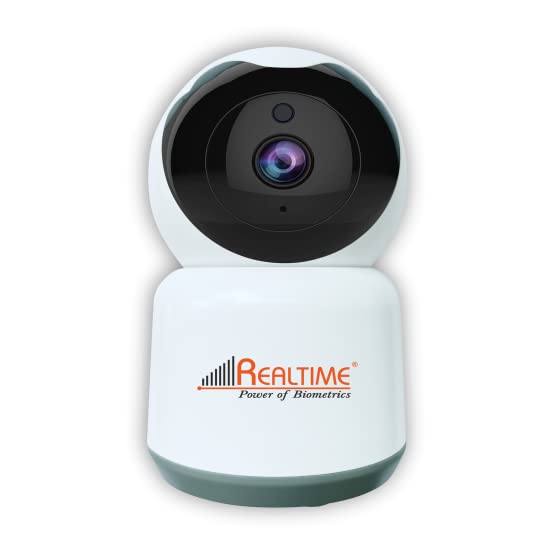The good old days saw the grainy black-and-white footage of a shadowy figure on the cutting-edge spectrum of security video. In the modern world, we expect our security cameras to catch everything from a burglar’s shoelace pattern to a squirrel’s smile. What sets these two apart is resolution itself.
Currently, when everything is governed by visuals, knowing which the highest resolution security camera is a prestige. Instead, it is a goal attained for safeguarding better, making intelligent decisions, and obtaining clear and undisturbed proof at the time of need. It is resolution, whatever may be the case: guarding a house, a business, or an invaluable garden gnome.
Let’s dive into this pixel-packed world of modern surveillance and see just how sharp your security can get.
Security Camera Resolutions Explained
In security jargon, “resolution” is simply the number of pixels used by a camera to record an image. Consider resolution as the level of detail visible to the camera. The more pixels the images contain, the more detailed they are.
Here’s the elevator pitch:
The alternative is to create infinite variations for a myriad of situations on the camera:
- 720p (HD): Bare minimum. Think flip phone era.
- 1080P: Baseline. Used popularly by home cameras at present.
- 2K (1440p): Sharar level of HD; good for wider angle cameras.
- 4K (2160p or 8MP): four times sharper than 1080P!
- 12MP / 16MP: This would belong to the top leagues, especially where multiple or scenic views are needed for high-security surveillance. Scoring beyond excellent!
If 720p is like peering through fogged-up glasses, 4K is cleansing those glasses with unicorn tears.
4K cameras, also known as 8MP cameras, are currently the gold standard in high-resolution security. Brands like Lorex, Arlo, and Swann offer 4K cameras that are redefining what “clear footage” means.
Take, for example, Lorex’s Dual-Lens camera: two ultra-wide 4Ks are stitched together to eliminate any distortion and provide a 180-degree uninterrupted view. It means the entire driveway, sidewalk, and, perhaps, even the neighbor grilling at noon are in view.
These cameras do more than just provide better video. They allow smart features like facial recognition up to 80 feet away, advanced AI motion detection, and better low-light performance. And with H.265 compression, they deliver all that sharpness without devouring your storage.
When a 1080p Camera Let Me Down
A few years ago, I installed a decent 1080p camera outside my shop. It was supposed to be my digital watchman. One night, someone broke in. The footage? A blurry silhouette. The thief could’ve been me in a hoodie, and I wouldn’t have known.
That’s when I upgraded to a 4K system. A week later, a delivery guy tried to claim he left a package at my door. I checked the footage. Not only could I see his face, but I could also read the text on the side of his coffee cup. That, my friends, is a resolution you can rely on.
Beyond 4K: The Ultra HD Giants (12MP, 16MP and counting)
While 4K cameras are leading the consumer market, ultra-high-resolution cameras like 12MP and 16MP are entering the chat.
These cameras are often used for:
- Government surveillance
- Commercial complexes
- Scenic live streams (like beach cams or wildlife observation)
The higher the resolution, the bigger the file. You’ll need massive storage, solid bandwidth, and possibly an IT degree (or just call us). Still, for situations where facial recognition or license plate clarity is crucial, these cameras are worth every pixel.
Storage Smarts: Don’t Let High Resolution Eat Your Hard Drive
Recording could be in 4K, but that shouldn’t mean your hard drive should dry up. Thanks to modern video compression techniques such as H.264 and H.265, we end up with smaller sizes and sharper images.
Furthermore, PoE cameras and NVR systems simplify storage and control. Alternatively, one could install different resolutions in the same system, 4K outside,1080p inside, based on their balancing. Just because your camera sees like an eagle doesn’t mean your storage should scream like a chicken.
Smart Detection Meets High Resolution
What do you get when you cross ultra-sharp footage with artificial intelligence? A camera that thinks.
High-resolution cameras with AI can:
- Detect people vs. pets vs. vehicles
- Identify packages being delivered or stolen
- Send smart alerts to your phone with preview clips
Cameras like the Arlo Ultra and Lorex 4K Dual-Lens come with these intelligent features. They don’t just see; they understand. And that makes your security system proactive, not reactive.
So, what is the Highest Resolution Security Camera?
So, what is the highest resolution security camera? Currently, for everyday consumers, it’s the 4K or 8MP model. But if you’re aiming higher, 12MP and 16MP cameras are available, though more suited for special surveillance needs.
Our take? 4K is the sweet spot—you get stunning detail, AI features, reliable performance, and compatibility with modern NVR systems without needing a data centre in your garage.
Clarity is the New Security
Possessing the highest megapixel camera in a setup is not just a status symbol; it’s about having the verdict, acting upon it with smart surveillance, and having the feeling of being at peace. Be it for the protection of your family or merely securing your shipments, the greatest clarity would be your best friend.
Remember, when it comes to home or business security, what is the highest resolution security camera might not just be a question—it could be your solution. Looking to upgrade your surveillance game? CCTV dealers in Chandigarh help you find and install the best high-resolution security cameras suited for your needs. Call us today and see the difference clarity makes.

